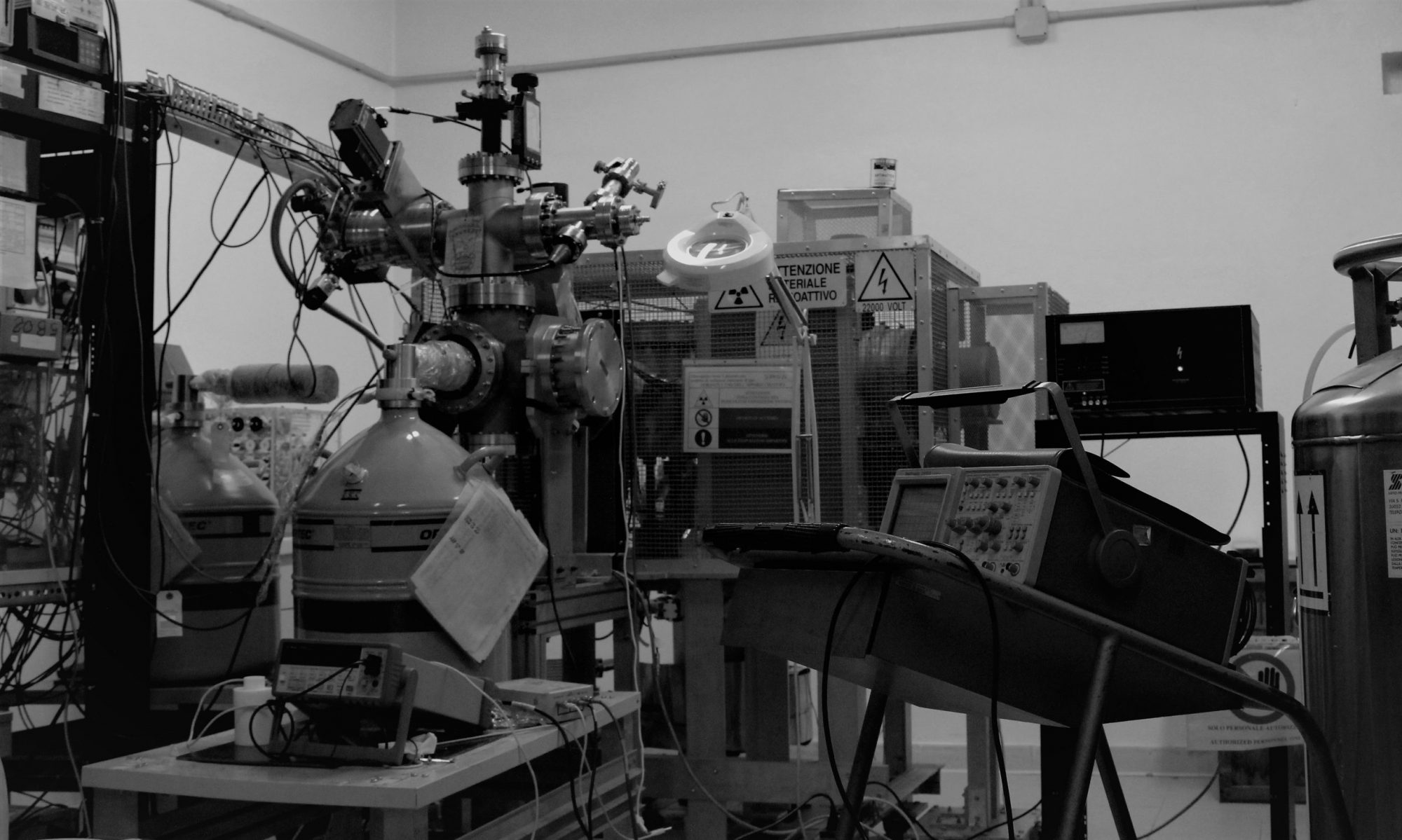Positronium
Ps is a system consisting of an electron and a positron bound together into an “hydrogenoid atom”. Ground statePs is formed for 75% as ortho-Ps (spin 1) and for 25% as para-Ps (spin 0). Para-Ps annihilates in two gamma rays with 511 keV each and ortho-Ps in vacuum is required to annihilate into three gamma rays at least, with a maximum energy of 511 keV each and with a total energy of 1022 keV (total rest mass). We are interested only in Ps emitted by the converter as ortho-Ps with a characteristic lifetime in vacuum of 142 ns, since the lifetime of para-Ps is too short (125 ps) to allow the necessary laser excitation before annihilation. The ortho-Ps lifetime can be shortened by collisional pick-off annihilation and ortho-para conversion (both processes lead to annihilation in two gamma rays) in ranges typically from a fraction of nanosecond to tens of nanoseconds.
Positronium in porous materials
Schematic views of systems formed by nanometric solids interspersed with empty regions: a) a random structure in a disordered SiO2 skeleton (e.g. silica Aerogel or compressed powder); b) ordered Si nano-channels with SiO2 at the surface.
A strategy to obtain Ps in vacuum is using mesoporous materials with pores open to the surface. Porous materials are necessary not only to form a high yield of Ps atoms but also to cool Ps through collisions with the inner walls of the pores. Ps atoms are emitted from the pore walls with high kinetic energy (1-3 eV). The collisions between Ps and the internal surface of the pores involve weak coupling to phonons or other surface modes. The velocity distribution of the Ps atoms coming out of the target should be the order of 104 m/s to allow Ps laser excitation to a Rydberg state (Ps*) and for efficient Hformation, which requires that the relative velocity of antiprotons and Ps* must be not higher than the classical orbital velocity of the positron in the Rydberg Ps atom. Efficient formation of cooled Ps atoms is a requisite for the production of antihydrogen. The thermalization of Ps atoms is possible by means of thousands of collisions with the walls of the pores. A careful choice of the materials used to convert bare positrons in Ps atoms is required to provide the appropriate morphology for efficient cooling. Not only is the morphology of the pores at nanometric scale an important aspect, but also the chemical composition of the pore walls. The figure shows schematic views of two nanometric porous solids, which represent two alternative strategies for e+/Ps converter samples with wide and interconnected random pores (panel a) and ordered structures with SiO2 at the surface of the pores (panel b).
Aerogel
Aerogel is a manufactured material with the lowest bulk density of any known porous solid. It is derived from a gel in which the liquid component of the gel has been replaced with a gas. The result is an extremely low-density solid, with a notable effectiveness as a thermal insulator.
Aerogels are produced by extracting the liquid component of a gel through supercritical drying. This allows the liquid to be slowly drawn off without causing the solid matrix in the gel to collapse from capillary action, as would happen with conventional evaporation.
The research works about Ps production in Aerogel are in collaboration with the Jet Propulsion Laboratory (NASA).

